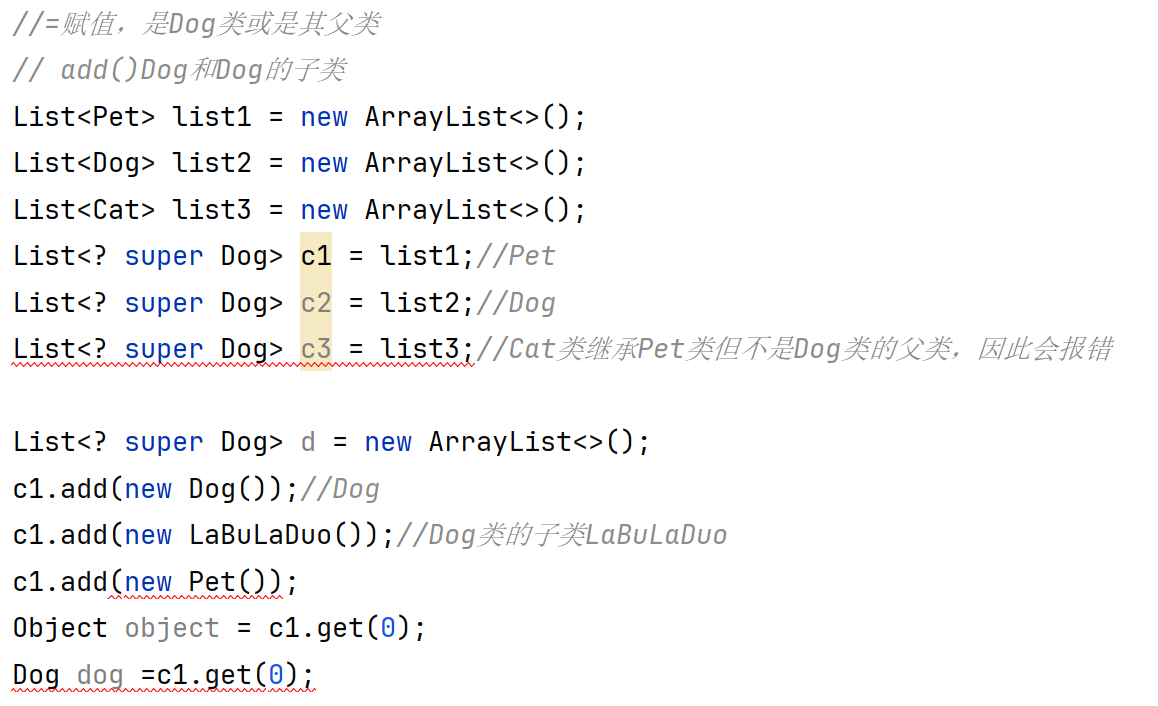《python零基础入门》:python零基础入门学习
《shell》:shell学习
《terraform》持续更新中:terraform_Aws学习零基础入门到最佳实战
《k8》从问题中去学习k8s
《docker学习》暂未更新
《ceph学习》ceph日常问题解决分享
《日志收集》ELK+各种中间件
《linux》运维面试100问
《DBA》db的介绍使用(mysql、redis、mongodb...)
命令模块
-
command
# 默认模块, 执行命令 [root@m01 ~]# ansible web_group -a "hostname"
-
shell
# 如果需要一些管道操作,则使用shell [root@m01 ~]# ansible web_group -m shell -a "ps -ef|grep nginx" -f 50
-
script
# 编写脚本 [root@m01 ~]# vim /root/yum.sh #!/usr/bin/bash yum install -y vsftpd#在本地运行模块,等同于在远程执行,不需要将脚本文件进行推送目标主机执行 [root@m01 ~]# ansible web_group -m script -a "/root/yum.sh"
软件管理模块
-
yum
[root@m01 ~]# ansible web_group -m yum -a "name=httpd state=present" name httpd #指定要安装的软件包名称file:// #指定本地安装路径(yum localinstall 本地rpm包)http:// #指定yum源(从远程仓库获取rpm包)state #指定使用yum的方法installed,present #安装软件包removed,absent #移除软件包latest #安装最新软件包[root@m01 ~]# ansible-doc yum exclude=kernel*,foo* #排除某些包 list=ansible #类似于yum list查看是否可以安装 disablerepo="epel,ol7_latest" #禁用指定的yum仓库 download_only=true #只下载不安装 yum install d
-
yum_repository
#添加yum仓库 [root@m01 ~]# ansible web_group -m yum_repository -a "name=zls_epel description=EPEL baseurl=https://download.fedoraproject.org/pub/epel/$releasever/$basearch/" -i ./hosts#仓库名和配置文件名不同 [root@m01 ~]# ansible web_group -m yum_repository -a 'name=zls_epel description=EPEL file=test_zls baseurl=https://download.fedoraproject.org/pub/base/$releasever/$basearch/ gpgcheck=no' -i ./hosts#添加mirrorlist [root@m01 ~]# ansible web_group -m yum_repository -a 'name=zls_epel description=EPEL file=test_zls baseurl=https://download.fedoraproject.org/pub/base/$releasever/$basearch/ gpgcheck=no mirrorlist=http://mirrorlist.repoforge.org/el7/mirrors-rpmforge enabled=no' -i ./hosts#删除yum仓库及文件 [root@m01 ~]# ansible web_group -m yum_repository -a 'name=zls_epel file=test_zls state=absent' -i ./hosts#开起gpgcheck [root@m01 ~]# ansible web_group -m yum_repository -a 'name=zls_epel description=EPEL file=test_zls baseurl=https://download.fedoraproject.org/pub/base/$releasever/$basearch/ gpgcheck=yes gpgkey=http://mirrors.aliyun.com/centos/RPM-GPG-KEY-CentOS-7' -i ./hostsname #指定仓库名,如果没有file则为仓库文件名 baseurl #指定yum源 gpgcheck #指定检查秘钥noyesenabled #是否启用仓库noyes
ansible文件管理模块
[root@m01 ~]# ansible backup -m -a 'src=/root/zls_xxx.conf dest=/etc/rsyncd.conf owner=root group=root mode=0644'src:指定源文件位置(管理机上的文件) dest:指定你要推送到主机的目标位置 owner:指定属主 group:指定属组 mode:指定权限 backup:是否备份,第一次推,没有每份,对端机器存在该文件,并且内容不一致,才会做备份yes:推送之前,先备份目标主机的源文件no:不备份 remote_src:源文件是否在远端的机器上yes:是no:否 content:往指定目标文件中写入内容
-
file
作用:
-
授权
-
创建目录
-
创建文件
-
创建软连接
-
删除目录,文件,软连接
[root@m01 ~]# ansible all -m file -a 'path=/opt/test/zls owner=www group=www mode=0722 state=directory' [root@m01 ~]# ansible all -m file -a 'path=/code owner=www group=www recurse=yes'path:指定文件或目录的路径 owner:指定属主 group:指定数组 mode:指定权限 src:做 软/硬 链接的时候使用,指定源文件 recurse:是否递归授权yes:递归授权no:仅授权当前目录 state:directory:创建目录touch:创建文件link:做软链接hard:做硬链接absent:删除file:配合 modification_time access_time 修改文件的属性,stat
-
get_url
类似于:wget
[root@m01 ~]# ansible backup -m get_url -a 'url=http://test.driverzeng.com/Nginx_File/nginx.txt dest=/root checksum=md5:8f8dd0f79bc6ef2148ca3494070a86a1'url:指定下载文件的地址 dest:指定下载的路径 mode:指定权限 checksum:指定加密的算法sha256md5
-
fetch
将目标主机文件拉取到操控机器
# 批量将日志拉取到操控机器 ansible test -m fetch -a 'src=/opt/apache-tomcat-jtour-chu-code/logs/2021-10/jtour-chu-code-2021-10-11-catalina.tar.gz dest=/tcy'# 说明 -m 指定模块 src 目标主机源文件 dest 保存槽控机/tcy目录
ansible服务管理模块
service、systemd
#启动crond并加入开机自启 [root@m01 ~]# ansible web_group -m service -a "name=crond state=started enabled=yes"#停止crond并删除开机自启 [root@m01 ~]# ansible web_group -m service -a "name=crond state=stoped enabled=no" [root@m01 ~]# ansible 'c6,backup' -m service -a 'name=crond state=stopped' name:指定服务名称 state:started:启动服务stopped:停止服务restarted:重启服务reloaded:重新加载服务 enabled:开机自启
ansible用户管理模块
user
[root@m01 ~]# ansible all -m user -a 'name=zlsqqq uid=10201 group=root shell=/sbin/nologin create_home=false'name:指定用户名 uid:指定uid -u group:只能指定组名,不能指定gid -g shell:指定登录的方式 -s create_home:是否创建家目录true,yes:创建false,no:不创建 comment:指定注释 -c groups:指定附加组(配合append,如果不加append覆盖) -G append:创建附加组的时候,追加 -a remove:删除用户的时候,是否同时删除家目录和邮件文件true,yes:删除fasle,no:不删除 statepresent:创建absent:删除generate_ssh_key:是否创建秘钥对yes:创建no:不创建 ssh_key_bits:指定秘钥对加密长度 ssh_key_file:指定私钥文件的位置 system:是否是系统用户 -ryes:是系统用户no:不是系统用户
group
[root@m01 ~]# ansible all -m group -a 'name=xxxx gid=10010 state=present'name:指定组名 gid:指定组id state:present:创建absent:删除
ansible定时任务模块
cron
# 注意:定时任务这里是根据name来判断被管理端是否被推送,如果删除定时任务某一条的语句也只是删除name就好了 # 创建 [root@m01 ~]# ansible all -m cron -a "name='sync time' minute=*/5 job='ntpdate time1.aliyun.com &>/dev/null'"# 删除(删除是根据注释来删除的 name) [root@m01 ~]# ansible all -m cron -a "name='time' state=absent"name:指定定时任务的名字(添加一个备注) state:present:创建定时任务absent:删除定时任务minute:分 (0-59) */5 10-20 10,20 hour:时(0-23) day:日(1-31) month:月(1-12) weekday:周(0-6)
ansible磁盘挂载模块
-
mount
[root@m01 ~]# ansible web_group -m mount -a 'path=/mnt src=10.0.0.31:/web_data fstype=nfs state=mounted'path:挂载到本地的目录 src:对端目录 fstype:文件系统类型nfsext4ext3 state:present:只写入开机自动挂载的文件中,不挂载mounted:既写入文件,又挂载absent:卸载设备,并且清理开机自动挂载文件unmounted:只卸载不清理文件推荐:- 挂载的时候:mounted- 卸载的时候:absent
ansible关闭selinux模块
#修改配置文件关闭selinux,必须重启 [root@m01 ~]# ansible web_group -m selinux -a 'state=disabled' -i ./hosts[WARNING]: SELinux state temporarily changed from 'enforcing' to 'permissive'. State change will take effect next reboot.web01 | CHANGED => {"ansible_facts": {"discovered_interpreter_python": "/usr/bin/python"},"changed": true,"configfile": "/etc/selinux/config","msg": "Config SELinux state changed from 'enforcing' to 'disabled'","policy": "targeted","reboot_required": true,"state": "disabled" } web02 | CHANGED => {"ansible_facts": {"discovered_interpreter_python": "/usr/bin/python"},"changed": true,"configfile": "/etc/selinux/config","msg": "Config SELinux state changed from 'enforcing' to 'disabled'","policy": "targeted","reboot_required": true,"state": "disabled" }#临时关闭 [root@m01 ~]# ansible web_group -m shell -a 'setenforce 0' -i ./hosts web02 | CHANGED | rc=0 >> web01 | CHANGED | rc=0 >>[root@m01 ~]# ansible web_group -m shell -a 'getenforce' -i ./hosts web02 | CHANGED | rc=0 >> Permissiveweb01 | CHANGED | rc=0 >> Permissive
ansible防火墙模块
[root@m01 ~]# ansible web_group -m firewalld -a 'service=http permanent=yes state=enabled' -i ./hosts [root@m01 ~]# ansible web_group -m firewalld -a "service=http immediate=yes permanent=yes state=enabled" -i ./hosts[root@m01 ~]# ansible web_group -m firewalld -a "port=8080-8090/tcp immediate=yes permanent=yes state=enabled" -i ./hostsservice #指定开放或关闭的服务名称 port #指定开放或关闭的端口 permanent #是否添加永久生效 state #开启或者关闭enableddisabledzone #指定配置某个区域 rich_rule #配置辅规则 masquerade #开启地址伪装 immediate #临时生效 source #指定来源IP
ansible主机模块(setup )
为什么要讲这个模块?
做过自动化的小伙伴会觉得这个模块非常实用
在公司中总会有一些需求
-
比如: 1.根据不同主机不同IP创建对应IP的目录 2.根据不同主机不同主机名创建对应主机名的目录 3.自动化运维平台需要自动获取到主机的IP地址,内存信息,磁盘信息,主机名...等 4.如果安装数据库,分配内存为物理内存的80%,此时有3台不同物理内存的机器2G、4G、16G 写一个playbook的情况下,我需要获取到对应主机的内存并作出计算,写判断。
-
1.setup
[root@m01 ~]# ansible web01 -m setup这里显示东西实在太多了,就不放内容了。。。 所以一般用此模块都会和下面这些操作使用,只过滤有用信息
-
2.获取ip地址(利用setup模块)
[root@m01 ~]# ansible web01 -m setup -a 'filter=ansible_default_ipv4' web01 | SUCCESS => {"ansible_facts": {"ansible_default_ipv4": {"address": "10.0.0.7","alias": "eth0","broadcast": "10.0.0.255","gateway": "10.0.0.2","interface": "eth0","macaddress": "00:0c:29:f8:98:80","mtu": 1500,"netmask": "255.255.255.0","network": "10.0.0.0","type": "ether"},"discovered_interpreter_python": "/usr/bin/python"},"changed": false }
-
3.获取主机名
[root@m01 ~]# ansible web01 -m setup -a 'filter=ansible_fqdn' web01 | SUCCESS => {"ansible_facts": {"ansible_fqdn": "web01","discovered_interpreter_python": "/usr/bin/python"},"changed": false }
-
4.获取内存信息
[root@m01 ~]# ansible web01 -m setup -a 'filter=ansible_memory_mb' web01 | SUCCESS => {"ansible_facts": {"ansible_memory_mb": {"nocache": {"free": 1622,"used": 360},"real": {"free": 1068,"total": 1982,"used": 914},"swap": {"cached": 0,"free": 1023,"total": 1023,"used": 0}},"discovered_interpreter_python": "/usr/bin/python"},"changed": false }
-
5.获取磁盘信息
web01 | SUCCESS => {"ansible_facts": {"ansible_memory_mb": {"nocache": {"free": 1622,"used": 360},"real": {"free": 1068,"total": 1982,"used": 914},"swap": {"cached": 0,"free": 1023,"total": 1023,"used": 0}},"discovered_interpreter_python": "/usr/bin/python"},"changed": false
}
[root@m01 ~]# ansible_devices^C
[root@m01 ~]# ansible web01 -m setup -a 'filter=ansible_devices'
web01 | SUCCESS => {"ansible_facts": {"ansible_devices": {"sda": {"holders": [],"host": "SCSI storage controller: LSI Logic / Symbios Logic 53c1030 PCI-X Fusion-MPT Dual Ultra320 SCSI (rev 01)","links": {"ids": [],"labels": [],"masters": [],"uuids": []},"model": "VMware Virtual S","partitions": {"sda1": {"holders": [],"links": {"ids": [],"labels": [],"masters": [],"uuids": ["8e547355-994a-4bad-a941-da93f4f1cdfd"]},"sectors": "2097152","sectorsize": 512,"size": "1.00 GB","start": "2048","uuid": "8e547355-994a-4bad-a941-da93f4f1cdfd"},"sda2": {"holders": [],"links": {"ids": [],"labels": [],"masters": [],"uuids": ["9e4d046c-02cf-47bd-a4bf-1e8b5fa4bed5"]},"sectors": "2097152","sectorsize": 512,"size": "1.00 GB","start": "2099200","uuid": "9e4d046c-02cf-47bd-a4bf-1e8b5fa4bed5"},"sda3": {"holders": [],"links": {"ids": [],"labels": [],"masters": [],"uuids": ["7348b9b1-f2a7-46c6-bede-4f22224dc168"]},"sectors": "37746688","sectorsize": 512,"size": "18.00 GB","start": "4196352","uuid": "7348b9b1-f2a7-46c6-bede-4f22224dc168"}},"removable": "0","rotational": "1","sas_address": null,"sas_device_handle": null,"scheduler_mode": "deadline","sectors": "41943040","sectorsize": "512","size": "20.00 GB","support_discard": "0","vendor": "VMware,","virtual": 1},"sr0": {"holders": [],"host": "IDE interface: Intel Corporation 82371AB/EB/MB PIIX4 IDE (rev 01)","links": {"ids": ["ata-VMware_Virtual_IDE_CDROM_Drive_00000000000000000001"],"labels": [],"masters": [],"uuids": []},"model": "VMware IDE CDR00","partitions": {},"removable": "1","rotational": "1","sas_address": null,"sas_device_handle": null,"scheduler_mode": "deadline","sectors": "2097151","sectorsize": "512","size": "1024.00 MB","support_discard": "0","vendor": "NECVMWar","virtual": 1},"sr1": {"holders": [],"host": "IDE interface: Intel Corporation 82371AB/EB/MB PIIX4 IDE (rev 01)","links": {"ids": ["ata-VMware_Virtual_IDE_CDROM_Drive_10000000000000000001"],"labels": [],"masters": [],"uuids": []},"model": "VMware IDE CDR10","partitions": {},"removable": "1","rotational": "1","sas_address": null,"sas_device_handle": null,"scheduler_mode": "deadline","sectors": "2097151","sectorsize": "512","size": "1024.00 MB","support_discard": "0","vendor": "NECVMWar","virtual": 1}},"discovered_interpreter_python": "/usr/bin/python"},"changed": false
}
-
6.其他参数信息
ansible_all_ipv4_addresses:仅显示ipv4的信息。 ansible_devices:仅显示磁盘设备信息。 ansible_distribution:显示是什么系统,例:centos,suse等。 ansible_distribution_major_version:显示是系统主版本。 ansible_distribution_version:仅显示系统版本。 ansible_machine:显示系统类型,例:32位,还是64位。 ansible_eth0:仅显示eth0的信息。 ansible_hostname:仅显示主机名。 ansible_kernel:仅显示内核版本。 ansible_lvm:显示lvm相关信息。 ansible_memtotal_mb:显示系统总内存。 ansible_memfree_mb:显示可用系统内存。 ansible_memory_mb:详细显示内存情况。 ansible_swaptotal_mb:显示总的swap内存。 ansible_swapfree_mb:显示swap内存的可用内存。 ansible_mounts:显示系统磁盘挂载情况。 ansible_processor:显示cpu个数(具体显示每个cpu的型号)。 ansible_processor_vcpus:显示cpu个数(只显示总的个数)。
ansible解压模块
## 注意:unarchive可以解压任何格式的压缩包,前提条件就是远端的机器上必须有该包的解压命令 # 1.包只需要放在管理端,不需要放在被控端 # 2.如果执意要放在被控端,使用remote_src=trueansible backup -m unarchive -a 'src=/root/wordpress-5.0.3-zh_CN.tar.gz dest=/tmp remote_src=yes'ansible web02 -m unarchive -a 'src=/root/QQ.zip dest=/root'src:指定源文件在哪里(压缩包的路径) dest:指定你要解压的位置在哪里 remote_src:指定该包是否在远端机器yes:在no:不在# 案例操作演示:- name: unzip php and nginxunarchive:src: "{{ item.src }}"dest: "{{ item.dest }}"with_items:- { src: "/ansible/nginx/nginx.php.tar.gz" , dest: "/opt" }- { src: "/ansible/nginx/wordpress-5.0.3-zh_CN.tar.gz" , dest: "/code" }
ansible 数据库模块
grant all on *.* to wp@'%' identified by '123'# 操作演示 (创建库) mysql_db:name: 库名state: prensent# 操作演示 (创建用户)- name: Create WordPress Usermysql_user:#login_user: 'root' # 如数据库主机连接数据库有设置用户,此处写上连接用户#login_password: '123' # 如数据库主机连接数据库有设置密码,此处写上连接密码#login_host: 'localhost' # 如数据库主机连接数据库有设置仅本地登录,此处写上为本地登录name: wp_user # 指定创建数据库用户password: '123' # 指定创建用户的密码host: '%' # 指定用户能在所有主机远程连接使用priv: '*.*:ALL' # 指定用户具备对所有库中所有表的权限state: present # 指定用户状态为安装
ansible之template模块
# 简介: · 和一样,但使用template模块针对脚本时,如脚本中有变量(这里的变量指ansible变量),会将推送主机的不同,从而变量结果也不一样, 总的来说就是template能识别变量。 ansible之template模块 趁着最近在搞ansible,现在学习了一波template模块的用法: 1、使用template模块在jinja2中引用变量,先来目录结构树 [root@master ansible]# tree . ├── ansible.cfg ├── hosts ├── roles │ └── temp │ ├── tasks │ │ └── main.yaml │ ├── templates │ │ ├── test_if.j2 │ │ └── test.j2 │ └── vars │ └── main.yaml └── work_dir├── _configfile.retry└── _configfile.yaml 打开定义好的变量: [root@master ansible]# cat roles/temp/vars/main.yaml master_ip: 192.168.101.14 master_hostname: master node1_ip: 192.168.101.15 node1_hostname: node1 打开hosts文件查看节点信息: [root@master ansible]# egrep -v "^#|^$" hosts [nodes] 192.168.101.14 192.168.101.15 现在通过定义好的变量在templates目录下创建j2文件: [root@master ansible]# cat roles/temp/templates/test.j2 ExecStart=/usr/local/bin/etcd --name {{ master_hostname }} --initial-advertise-peer-urls http://{{ master_ip }}:2380 查看tasks主任务定义: [root@master ansible]# cat roles/temp/tasks/main.yaml - name: configfile to nodestemplate:src: test.j2dest: /tmp/test.conf 查看工作目录下面的执行yaml: [root@master ansible]# cat work_dir/_configfile.yaml - hosts: nodesremote_user: rootroles: - temp 在tasks目录下面的main.yaml定义使用了template模块,调用templates目录下面的test.j2文件 执行: [root@master ansible]# ansible-playbook work_dir/_configfile.yaml 然后在两个节点查看: [root@master ~]# cat /tmp/test.conf ExecStart=/usr/local/bin/etcd --name master --initial-advertise-peer-urls http://192.168.101.14:2380 [root@node1 ~]# cat /tmp/test.conf ExecStart=/usr/local/bin/etcd --name master --initial-advertise-peer-urls http://192.168.101.14:2380 可以看见在各个节点的tem目录下面的文件都用变量替换了2、使用template模块调用的j2文件使用{% if %} {% endif %}进行控制: [root@master ansible]# cat roles/temp/templates/test_if.j2 {% if ansible_hostname == master_hostname %} ExecStart=/usr/local/bin/etcd --name {{ master_hostname }} --initial-advertise-peer-urls http://{{ master_ip }}:2380 {% elif ansible_hostname == node1_hostname %} ExecStart=/usr/local/bin/etcd --name {{ node1_hostname }} --initial-advertise-peer-urls http://{{ node1_ip }}:2380 {% endif %} 在上面中使用if进行了判断,如果ansible_hostname变量与定义的master_hostname变量值相等,那么将此文件到节点上就使用条件1,而过不满足条件1那么执行条件2 ansible_hostname这个变量是setup模块中的值,是节点的固定值 [root@master ~]# ansible all -m setup -a "filter=ansible_hostname" 192.168.101.15 | SUCCESS => {"ansible_facts": {"ansible_hostname": "node1"}, "changed": false, "failed": false } 192.168.101.14 | SUCCESS => {"ansible_facts": {"ansible_hostname": "master"}, "changed": false, "failed": false } 现在查看tasks下面的文件: [root@master ansible]# cat roles/temp/tasks/main.yaml - name: configfile to nodestemplate:src: test_if.j2dest: /tmp/test.conf 将上面的test.j2改为了if条件的j2,然后执行: [root@master ansible]# ansible-playbook work_dir/_configfile.yaml 查看各节点生成的文件内容: [root@master ~]# cat /tmp/test.conf ExecStart=/usr/local/bin/etcd --name master --initial-advertise-peer-urls http://192.168.101.14:2380 [root@node1 ~]# cat /tmp/test.conf ExecStart=/usr/local/bin/etcd --name node1 --initial-advertise-peer-urls http://192.168.101.15:2380 可以看见生成的文件内容不一样,于是这样就可以将节点的不同内容进行分离开了 当然还可以使用另外的方式隔离节点的不同: ExecStart=/usr/local/bin/etcd --name {{ ansible_hostname }} --initial-advertise-peer-urls http://{{ ansible_ens33.ipv4.address }}:2380 因为各个节点的ansible_hostname和ip都是固定的所以也可以根据上面进行区分不同(不过这种方式限制了一定的范围)3、使用template模块调用j2文件使用for循环:创建jinja关于for的文件: [root@master ansible]# cat roles/temp/templates/test_for.j2 {% for i in range(1,10) %} test{{ i }} {% endfor %} [root@master ansible]# cat roles/temp/tasks/main.yaml - name: configfile to nodestemplate:src: test_for.j2dest: /tmp/test.conf 执行该角色: [root@master ansible]# ansible-playbook work_dir/_configfile.yaml 验证两节点的文件内容: [root@master ~]# cat /tmp/test.conf test1 test2 test3 test4 test5 test6 test7 test8 test9 [root@node1 ~]# cat /tmp/test.conf test1 test2 test3 test4 test5 test6 test7 test8 test9 4、使用default()默认值 当我们定义了变量的值时,采用变量的值,当我们没有定义变量的值时,那么使用默认给定的值: 首先查看定义的变量: [root@master ansible]# cat roles/temp/vars/main.yaml master_ip: 192.168.101.14 master_hostname: master node1_ip: 192.168.101.15 node1_hostname: node1 然后查看jinja2的文件: [root@master ansible]# cat roles/temp/templates/test_default.j2 Listen: {{ server_port|default(80) }} 可以看见并没有定义server_port这个变量 查看tasks文件: [root@master ansible]# cat roles/temp/tasks/main.yaml - name: configfile to nodestemplate:src: test_default.j2dest: /tmp/test.conf 执行完成后,查看文件内容: [root@master ~]# cat /tmp/test.conf Listen: 80 现在向vars/main.yaml中定义server_port变量,并给定值: [root@master ansible]# cat roles/temp/vars/main.yaml master_ip: 192.168.101.14 master_hostname: master node1_ip: 192.168.101.15 node1_hostname: node1 server_port: 8080 再次执行,然后查看文件内容: [root@master ~]# cat /tmp/test.conf Listen: 8080







